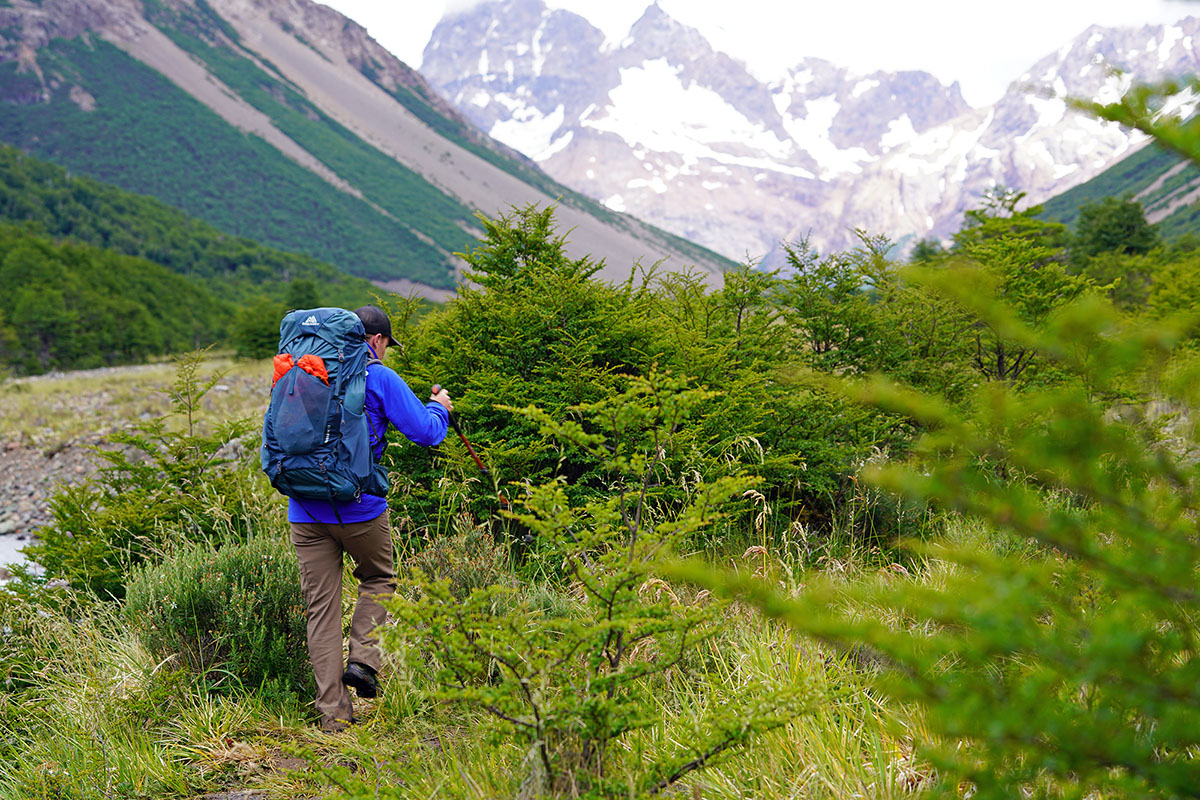
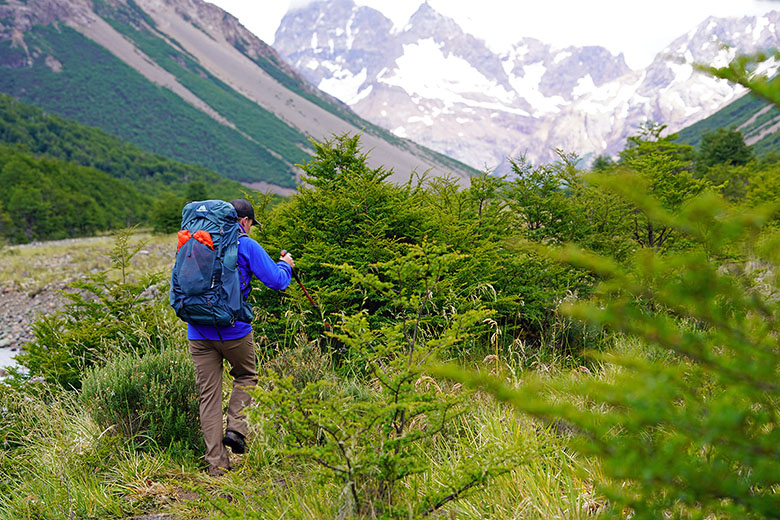
Switchback Travel


Switchback Travel
Price: $260
Weight: 3 lbs. 9.3 oz. (size MD/LG)
Fabric: Nylon (100D, 210D, & 420D)
Capacities: 48, 58, 68L
What we like: Very well-balanced design at a great price.
What we don’t: Thin hipbelt padding has a modest impact on carrying capacity.
See the Men's Gregory Paragon 58 See the Women's Gregory Maven 55
Best known for their heavy-hauling Baltoro, the Paragon backpack from Gregory cuts weight to appeal to the core overnight and weekend crowd. We really liked the original, and they recently updated the design with a mesh-heavy suspension system and side zippered access to the main compartment. After testing the pack on multiple backpacking trips in Patagonia, we think the revamp was a success: the Paragon still isn’t a standout in any one particular category, but its competitive price, adjustable fit, and good mix of weight and features make it a well-rounded option. Below we break down the Paragon’s overall performance. To see how it stacks up, see our article on the best backpacking packs.
Gregory has built its reputation around the comfort of its packs, and the Paragon 58 carries the torch in a trimmed-down form. The beefier Baltoro is optimal for those hauling 40+ pounds, but the Paragon is a better match for lighter loads in the 25- to 40-pound range (despite its 50-pound maximum carry weight). The padding on the hipbelt is fairly thin but firm and supportive, and the backpanel and shoulder straps offer enough cushioning for full days on the trail. In addition, you get a sturdier frame than expected for a sub-4-pound pack: a thin metal frame traces the entire perimeter, and an additional metal cross-stay runs through the middle of the backpanel. This boosts its carrying capacity and all-around support considerably (many lightweight designs compromise here with less metal in their overly flexible constructions).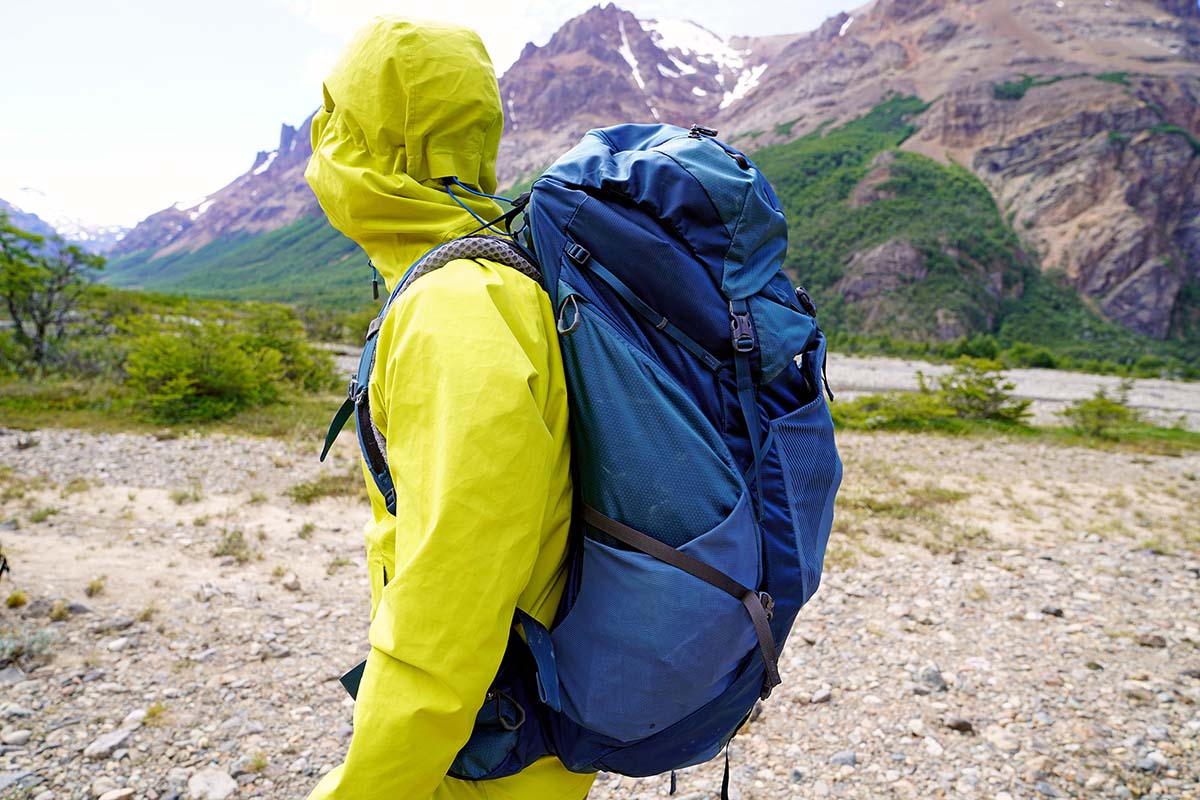
On one multiday trip in Parque Patagonia, I started out with a load of about 40 pounds and it felt like I was right at the max. The frame is sturdy enough to handle more weight, but the thin hipbelt padding dug slightly into my hips and was a small annoyance. That said, I carried a little less water on the rest of the trip, and as the pack’s weight decreased with less food, it felt great. Further, the updated mesh-heavy build and easy adjustability of the shoulder straps and hipbelt do a really nice job keeping the pack close to my back, which minimized excess movement and gave me a lot of confidence during river crossings and over more difficult terrain. Overall, the Paragon won’t take the place of the Gregory Baltoro as our favorite heavy hauler, but the design strikes us as a nice match for the majority of overnight and 3-season multiday trips. 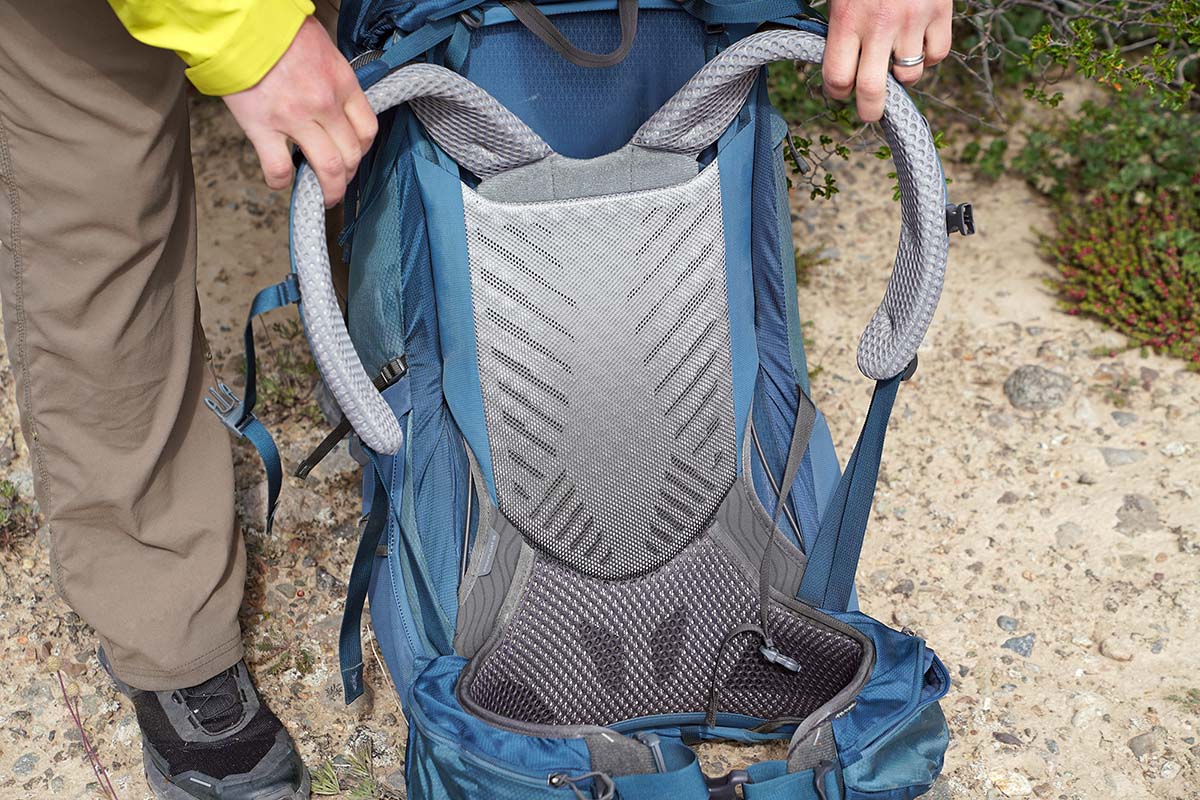
You can go lighter in the popular 55- to 65-liter range, but the Paragon’s 3-pound-9.3-ounce weight is nothing to scoff at. It easily undercuts many popular backpacking models like the Osprey Atmos AG 65 (4 lbs. 9 oz.) and Gregory’s own Baltoro 65 (4 lbs. 13.4 oz.), and it’s a near match to Osprey’s Rook 65 (3 lbs. 8.3 oz.) and The North Face Banchee 65 (3 lbs. 5 oz.). You can save significant weight with the REI Co-op Flash 55 (2 lbs. 10 oz.) and Osprey Exos 58 (2 lbs. 10.4 oz.), but both are ultralight-focused designs that shouldn’t exceed 30- to 35-pound loads. And once you factor in the features often found on heavier, deluxe packs like the Paragon’s rain cover, full metal frame, and side zippered access to the main compartment, its weight is perfectly reasonable. 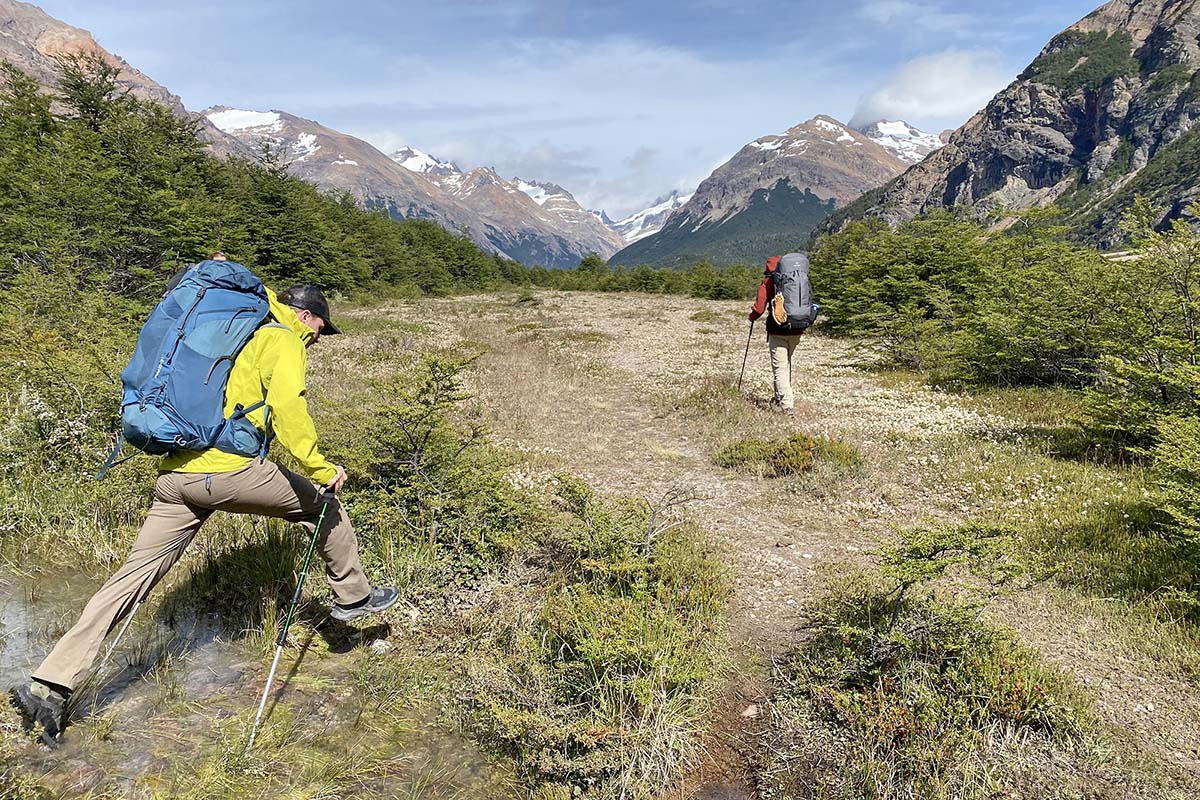
For such a light pack, the Gregory Paragon 58 has a great collection of organizational features. Arguably the biggest addition to the latest version was zippered access to the main compartment. Unlike many designs that open along the front like a duffel bag, Gregory went for simpler—and likely lighter—side access. The long opening runs nearly the entire length of the pack and offers easy entry. I used the zipper a lot during the day, grabbing items like food, utensils, and extra layers needed for Patagonia’s ever-changing weather. It’s true that the side zip isn’t as convenient as an opening along the front, but I quickly adapted and started placing items I’d likely need during the day on that side. All told, it’s a big win to get such convenient accessibility in a pack of this weight.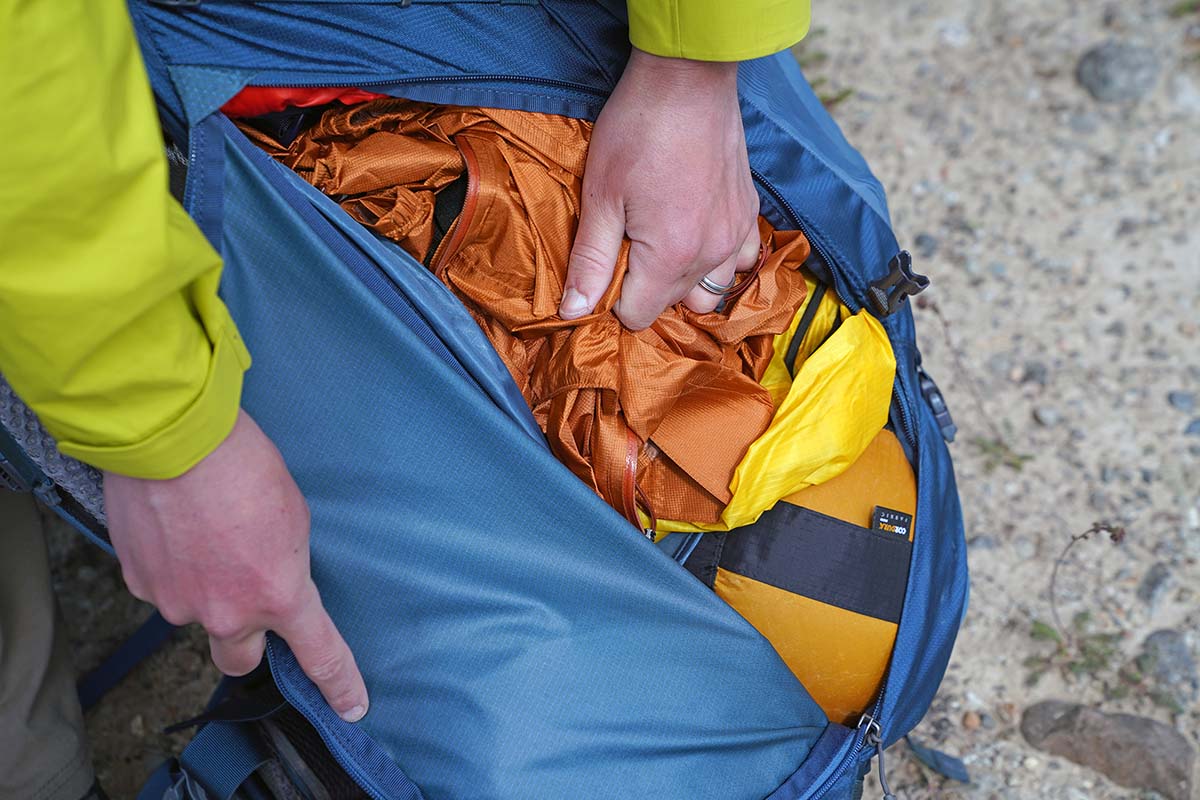
Additional storage includes a large mesh “shove-it” pocket along the front of the Paragon, which is very stretchy and a great place to keep items you want handy, as well as separating wet or smelly gear. The side water bottle pockets are also nicely executed and an appropriate size for fitting a wide range of bottles, and the pocket over your right shoulder has a second opening at elbow height for easy access without removing the pack. There are also two zippered hipbelt pockets, which are a decent size but unfortunately a bit too small to accommodate a large phone like the iPhone 11 (I’ve found this is a fairly common issue, and most average-sized phones should fit). You also get separate access to the bottom of the pack via a wide zipper. I often store my sleeping bag in this space and don’t need access to it until the end of the day, but the zipper does end up saving a little time when setting up camp and repacking in the morning.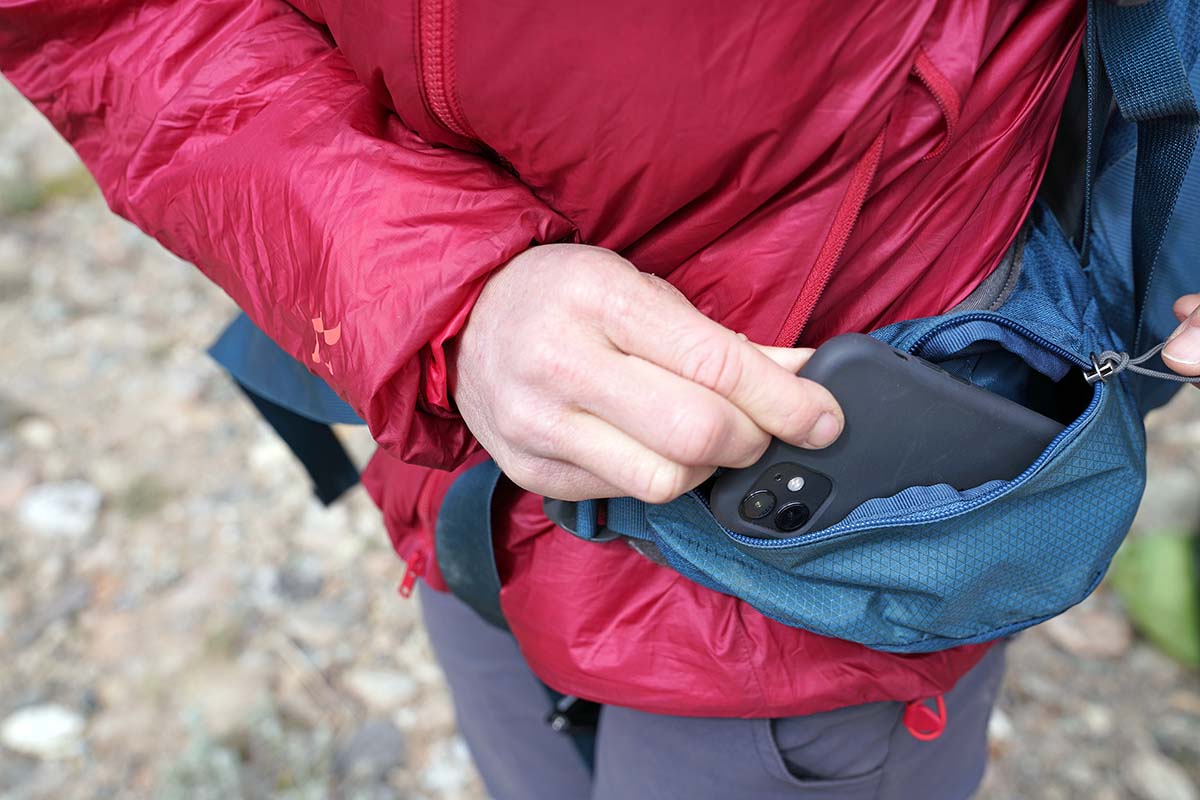
Rounding out storage, the top lid includes one very large, U-shaped pocket along the exterior for items like a headlamp or map, and there is zippered space on the underside of the lid that stores the rain cover. There’s also a key clip here, with enough space even with the rain cover inside for stowing items you don’t need quick access to (I used it for my passport and a small first aid kit). And one final note on storage: the large main compartment has a wide opening and is sized to fit most bear canisters. 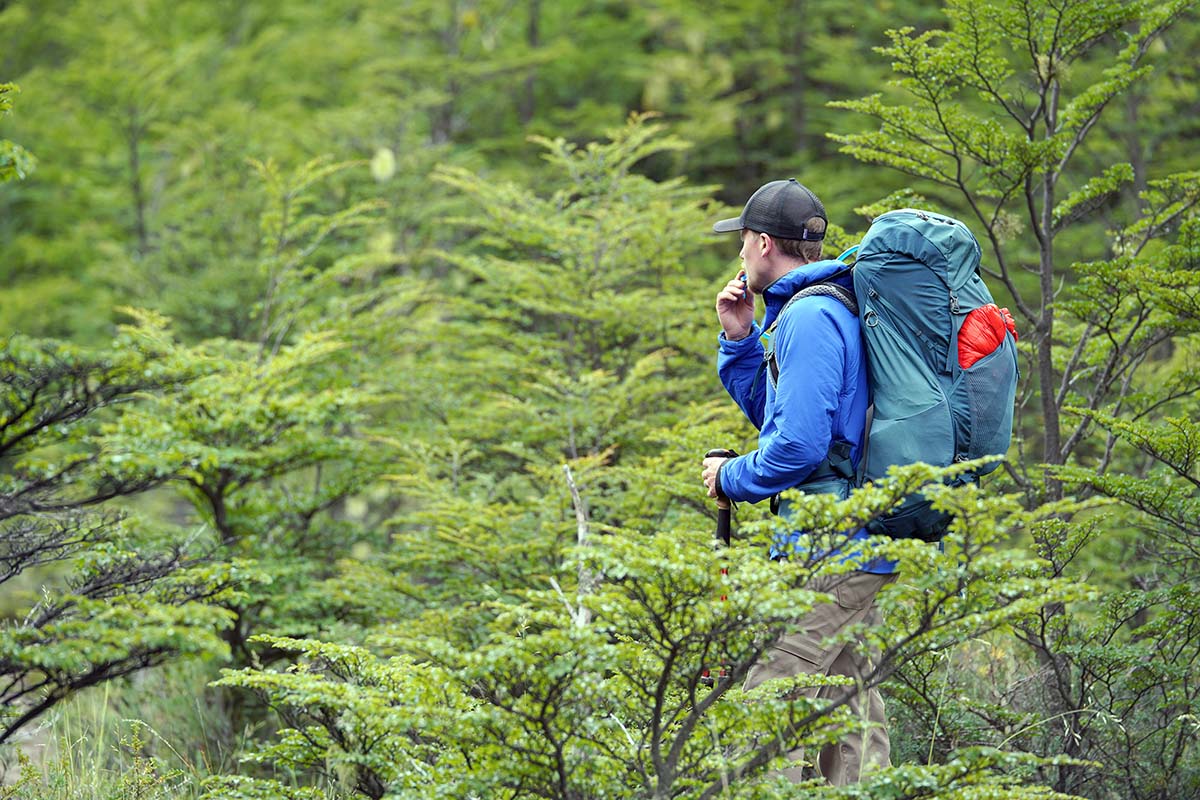
Along with improved access to the main compartment, Gregory addressed another of our complaints with the original Paragon: ventilation. The updated pack uses far more mesh, particularly in the lower portion of the backpanel and hipbelt, which had a noticeable impact on keeping us cool. Granted, we never experienced genuinely hot weather, but we did hike for stretches in unprotected sunlight and temperatures in the mid 70s Fahrenheit. In these conditions, I felt that the pack did a nice job wicking away moisture and encouraging airflow behind my back. It’s certainly not a standout like Osprey’s Atmos AG (which features a suspended mesh backpanel design), but the Paragon is perfectly serviceable in this regard. Plus, the cutouts in the foam helped it dry quickly during breaks on the trail.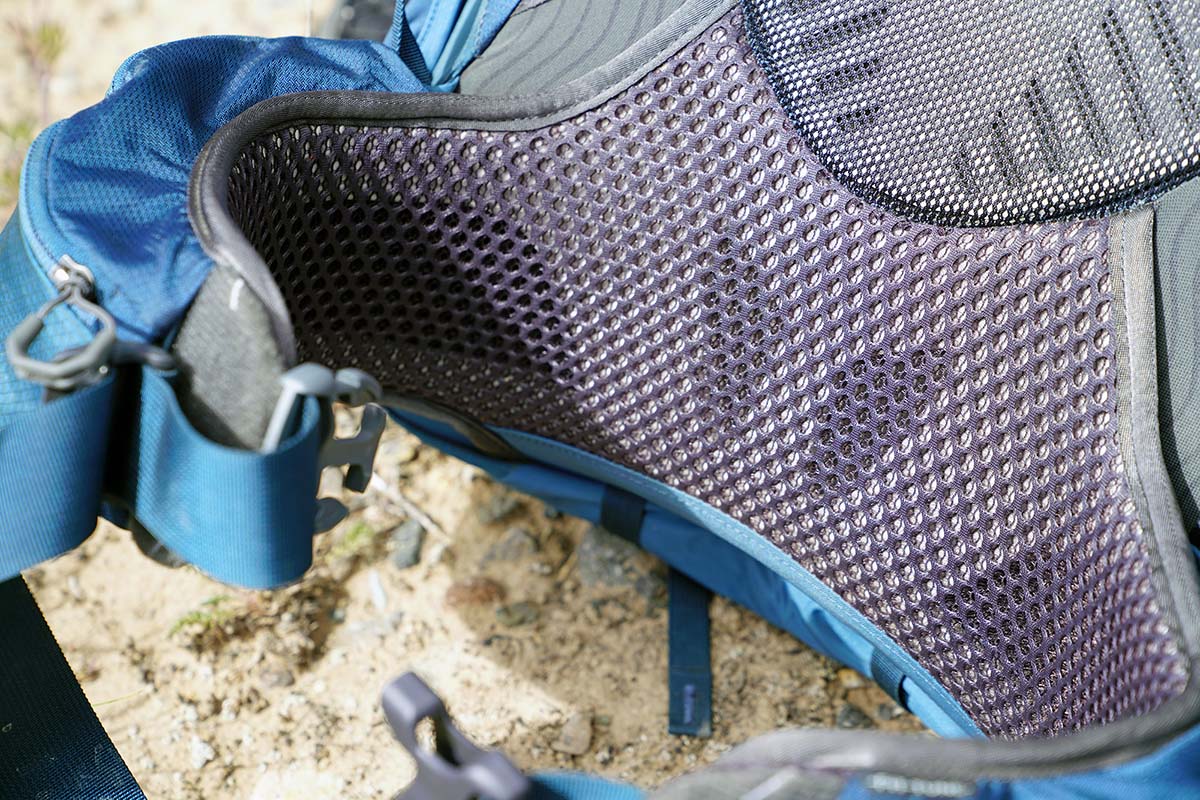
Given its budget-friendly price, a surprise inclusion to the Gregory Paragon 58 pack is a built-in rain cover. Tucked away on the underside of the top lid, the matching blue waterproof layer is quick and easy to deploy and fits snugly around the loaded-down pack. I used the cover a fair amount on the trip as we had multiple days with light rain, and it was also nice when setting the pack down at camp to keep it and items inside protected as we pitched our tents. Further, it held in place even despite strong gusts, although I wouldn’t trust its hold on an exceptionally windy day—in this case, I would recommend lining the interior of the pack with a dry bag or garbage bag to ensure the contents stay dry. And for those that don’t need the cover, you can leave it behind and use the zippered pocket for storage.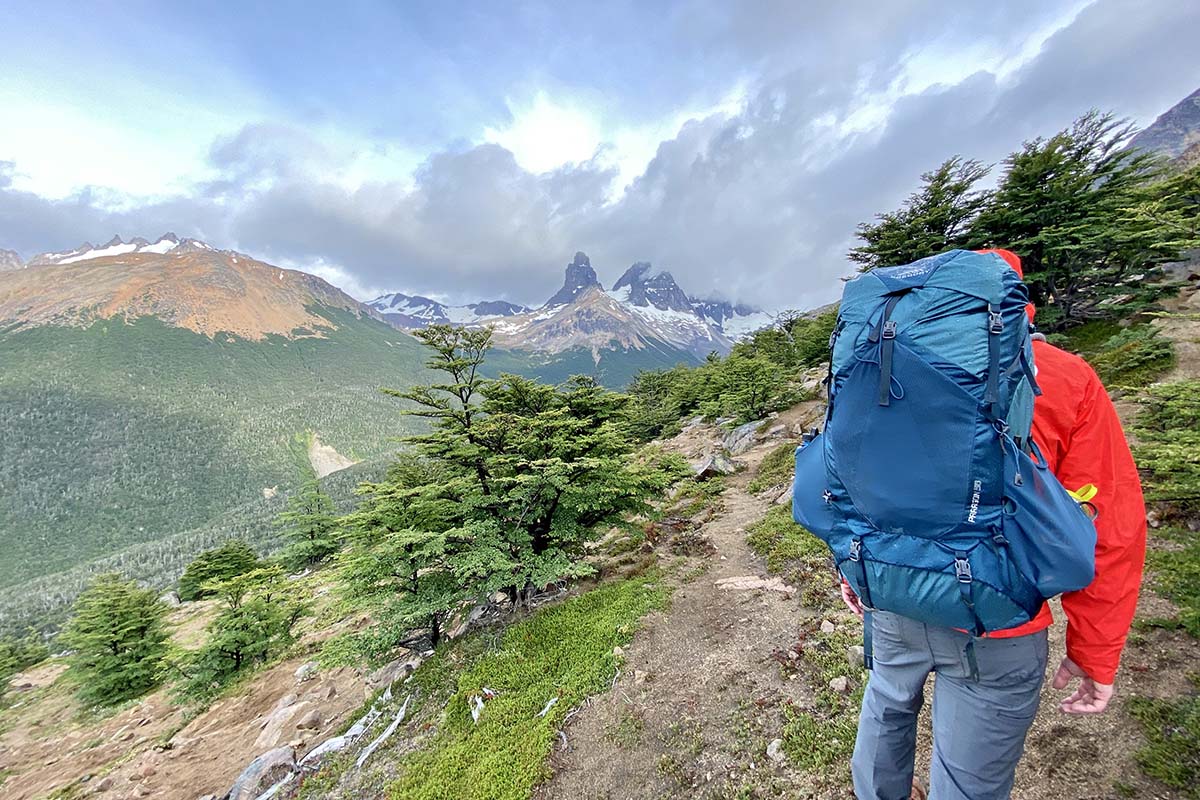
In most facets, the Paragon has good durability among lightweight packs. The material along the body balances weight and toughness with offset panels of 100-denier (D) and 210D ripstop nylon that has held up well through our trips so far, while the bottom of the pack uses a burly 420D nylon. We put some holes in the mesh water bottle pockets of the prior version, but the new model feels tougher and hasn’t torn yet. In fact, the entire build feels like a step up in build quality from the original. The new mesh backpanel is less plasticky than the prior model, and all the buckles, webbing, and zippers are holding up well thus far. It’s certainly not bombproof, and we’d advise taking some care when setting it down in particularly rough terrain—we’ve put holes in packs like the Osprey Exos that rely on 100D fabrics—but overall the Paragon feels well-built and reasonably sturdy for most backpacking trips.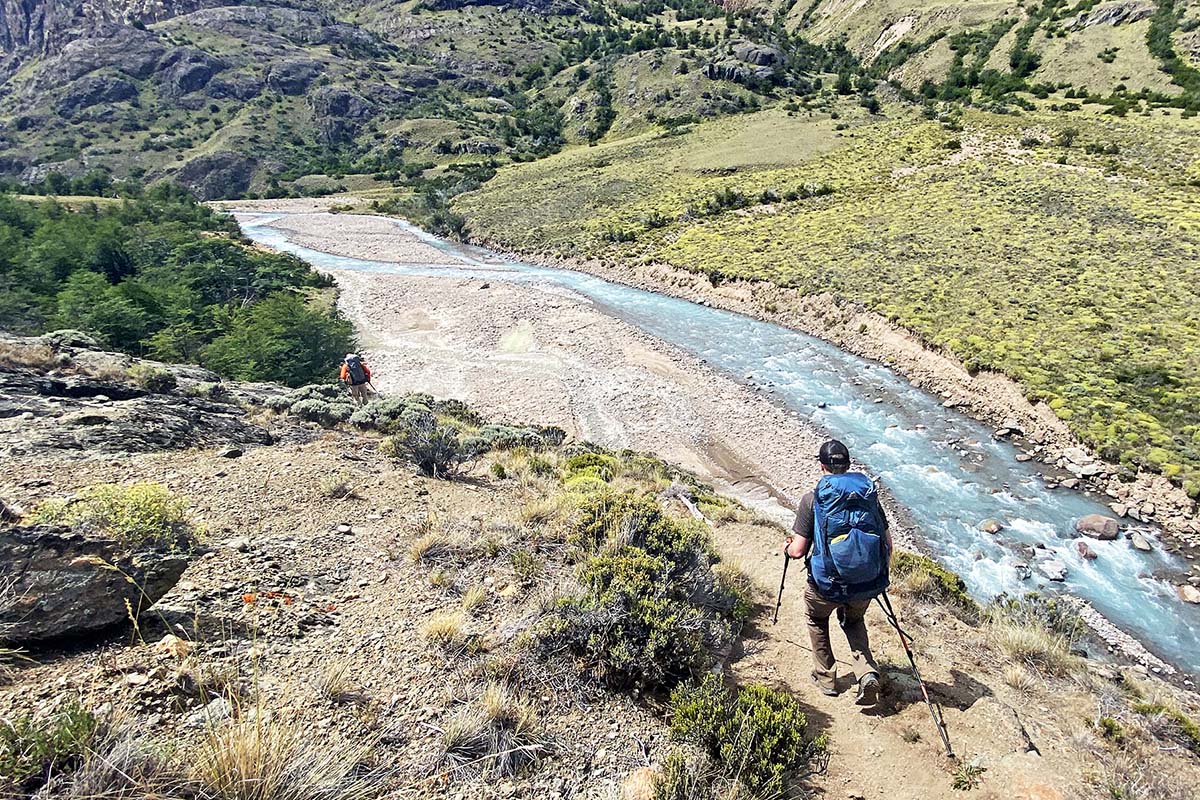
Key to the Paragon’s ability to carry weight efficiently is the highly adaptable fit. The shoulder straps and hipbelt can be adjusted quickly with a Velcro rip-and-stick design. This was a great feature as we were swapping out the pack between testers with differing 18- and 21-inch torsos, but it’s also a very practical solution for dialing in fit. Along with a tailored backpanel that has a substantial lumbar support, the pack hugs you more than you would expect at this $230 price point. Additionally, it’s worth noting that the Paragon is offered in two sizes (SM/MD and MD/LG), which is fairly common in this price range (some more premium options include a third). Given how well it fit our two testers on opposite ends of the size spectrum, this isn’t a downside. Finally, Gregory makes the pack in a women’s-specific version called the Maven, which is nearly identical to the men’s design (more on this below).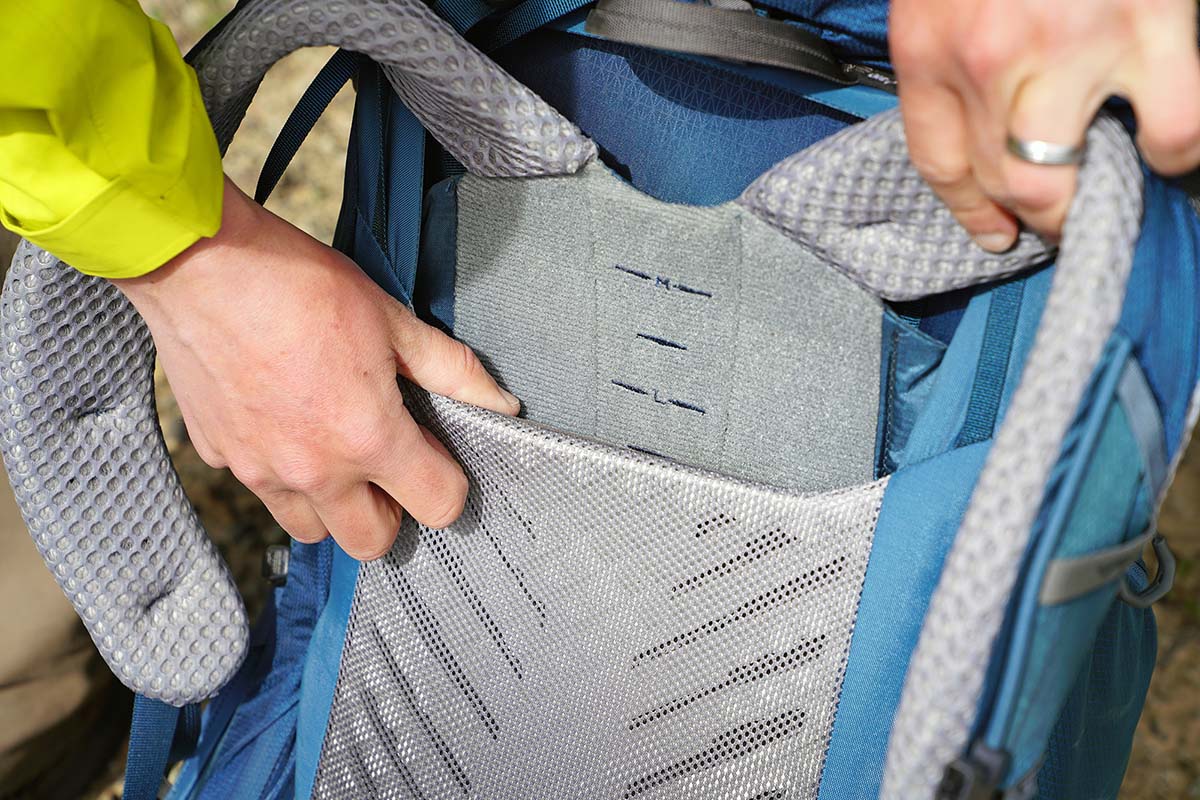
For this review, we took the Paragon 58 trekking in Patagonia, and Gregory makes the same pack in 48- and 68-liter capacities. The 58 should hit a sweet spot for most backpackers, but for those hauling bulkier gear, the 68-liter model might be a better option. Just keep in mind the two share suspension designs, so it likely won't have a higher max carry weight. For those who don’t need the extra room, the Paragon 48 appeals more to weight-conscious backpackers taking on shorter trips ($200; 3 lbs. 8.5 oz.).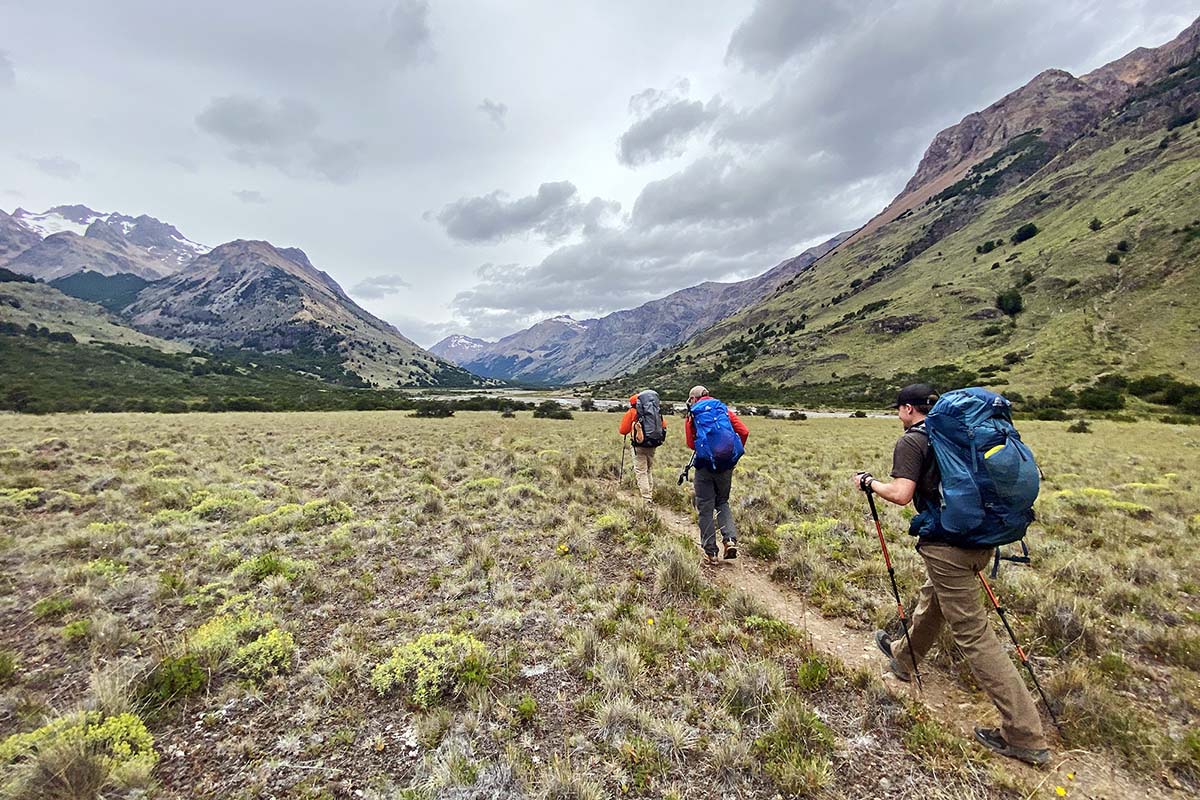
The Paragon is a men’s pack, but Gregory makes a women’s-specific counterpart called the Maven that comes in similar capacities: 45, 55, and 65 liters. Compared to the Paragon 58, the Gregory Maven 55 costs the same at $230 but comes in a few ounces lighter at 3 pounds 6.6 ounces for a small/medium. Otherwise, the two packs share an almost identical build, including ample organization, updated mesh-heavy backpanel, and good overall durability. The most discernible differences are in the pack’s fit and sizing, with varying torso and waist measurements, along with different colorways (although both models come in blue).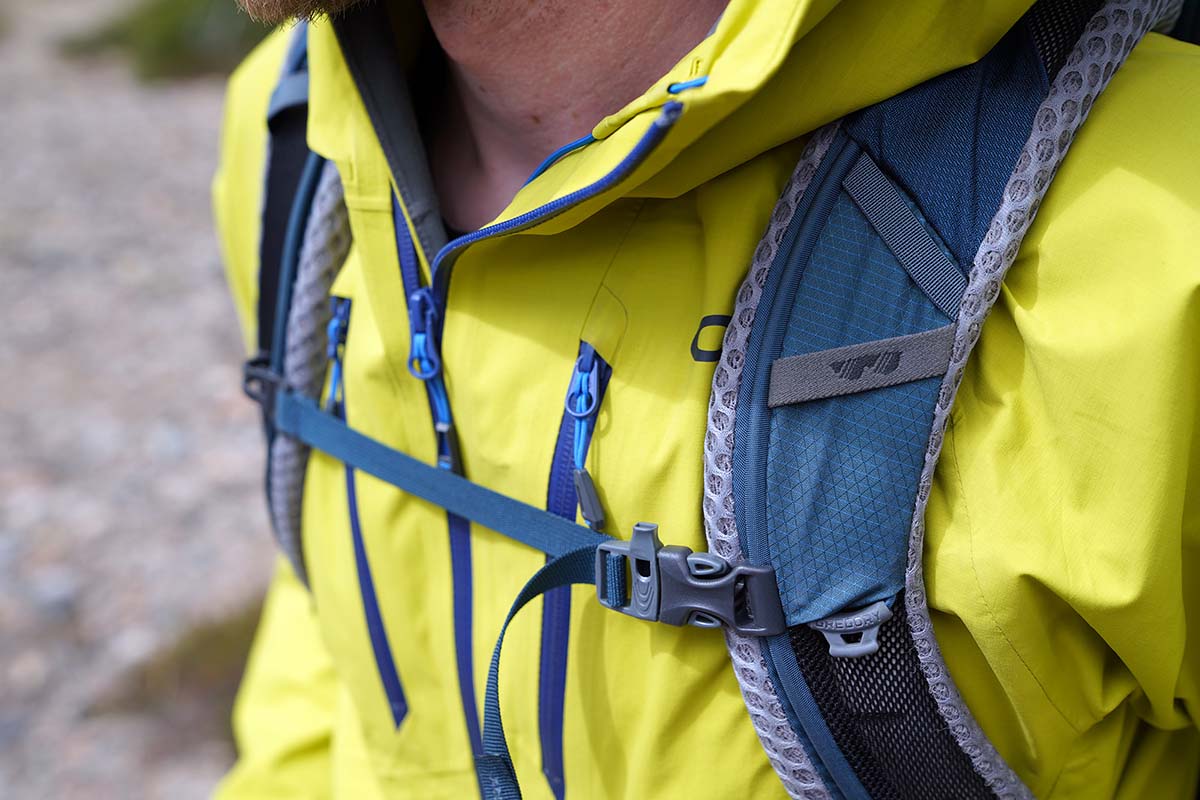
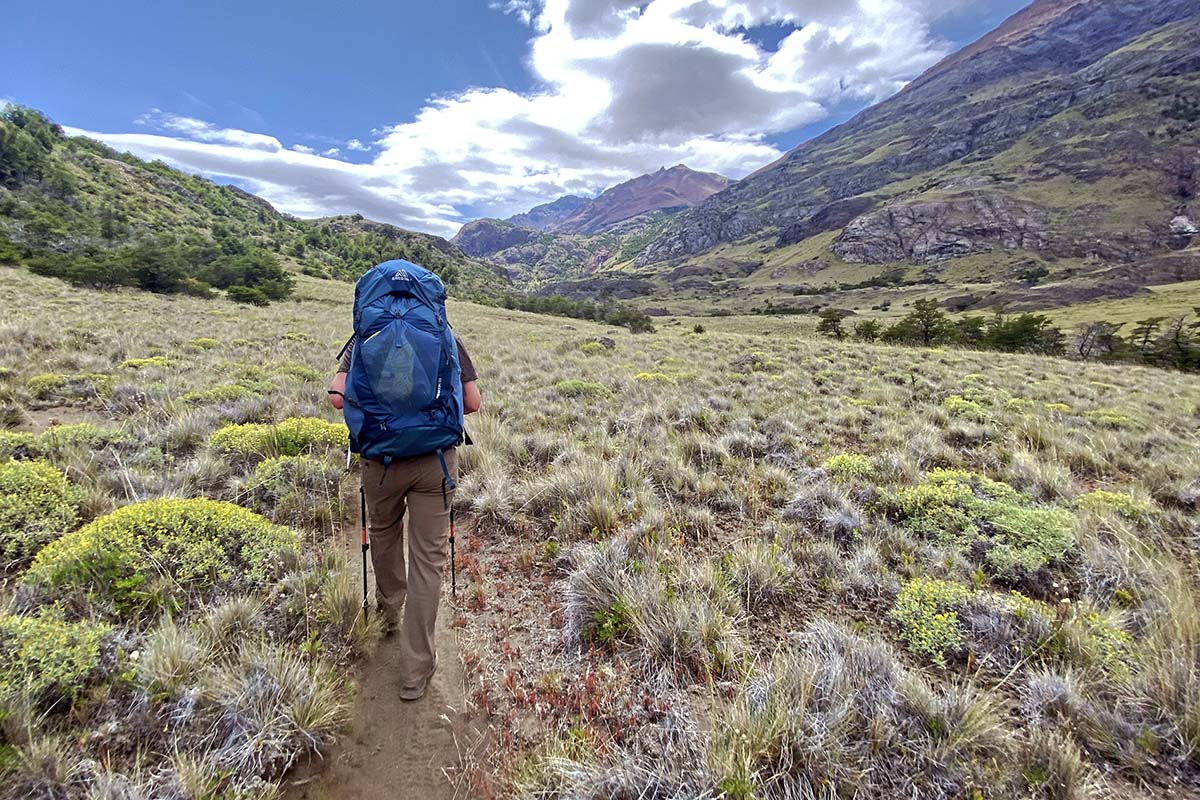
| Pack | Price | Weight | Fabric | Capacities | Access | Pockets |
|---|---|---|---|---|---|---|
| Gregory Paragon 58 | $260 | 3 lbs. 9 oz. | Nylon (100D & 420D) | 48, 58, 68L | Top, side | 6 exterior |
| Osprey Atmos AG 65 | $270 | 4 lbs. 9 oz. | Nylon (100D x 630D) | 50, 65L | Top | 8 exterior |
| Gregory Zulu 65 | $230 | 3 lb. 11.4 oz. | Nylon (210D) | 30, 35, 40, 55, 65L | Top, front | 6 exterior |
| Granite Gear Blaze 60 | $270 | 3 lbs. 0 oz. | Nylon (100D & 210D) | 60L | Top, front | 6 exterior |
| TNF Banchee 65 | $250 | 3 lbs. 5 oz. | Nylon (70D & 210D) | 50, 65L | Top | 8 exterior |
| REI Co-op Flash 55 | $199 | 2 lbs. 10 oz. | Nylon (100D & 420D) | 45, 55L | Top | 9 exterior |
Many backpacking packs we test get stacked up in some way to Osprey’s very popular Atmos AG 65. To start, the Osprey clearly is the more luxurious option: it can comfortably haul a bit more weight (we’ve been happy with the Atmos up to 45 pounds), has more exterior storage and noticeably better ventilation, and its materials have a higher-end and more durable feel (it uses a blend of 100 and 630D nylon on the body). Where the Paragon has the edge is weight (it’s almost 1 pound less), zippered access to the main compartment, and $40-lower price tag. Backpackers who get out a lot and occasionally need to haul a heavy load probably will prefer the Atmos as the better all-around pack, but the Paragon meets our weekend needs at a lower weight and friendlier price.
Within Gregory’s own lineup, we also like their Zulu 65, which costs the same as the Paragon at $230. In testing the Zulu, we especially appreciated the well-ventilated backpanel and U-shaped access to the main compartment, which made finding and grabbing gear quick and easy. And weight is competitive at 3 pounds 11.4 ounces (for the M/L size), especially given that the Zulu offers an additional 7 liters of capacity compared to the Paragon. That said, we found the Zulu to be fairly disappointing in terms of carrying comfort, and especially when hauling bulkier items (this was largely due to its shape, which is somewhat wide and short). In the end, in Gregory’s lineup we prefer the more well-rounded and comfortable Paragon.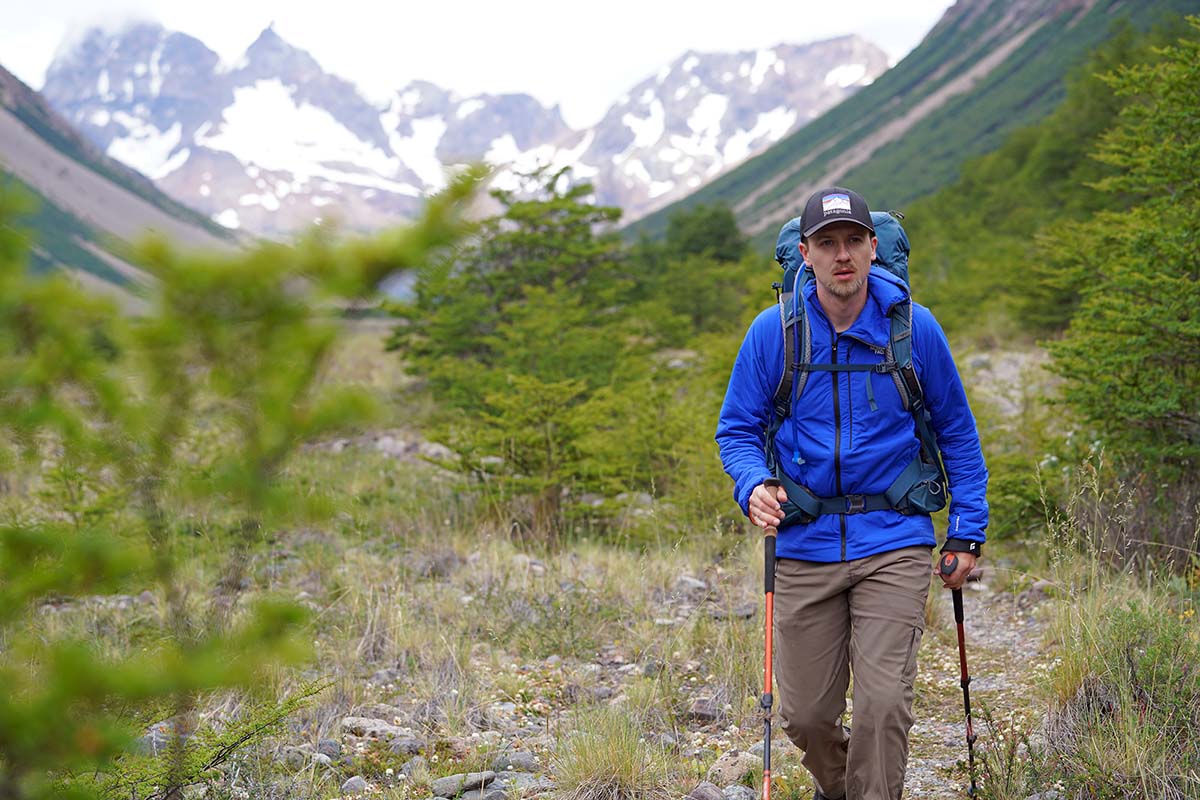
Another pack to have on your radar is Granite Gear’s Blaze 60. Stacked up to the Paragon, the Blaze is lighter at 3 pounds even, similarly durable with a mix of 100 and 210D robic nylon, and highly adjustable with moveable shoulder straps (these can be shifted up or down to fit your torso length) and a removable hipbelt. Further, we've found the Granite Gear to be a little more comfortable when loaded down (we carried around 35-40 pounds in the Grand Canyon without issue). That said, the Paragon is the better breather with more mesh in the backpanel, and the Blaze is $40 pricier at $270. In the end, the Paragon is a great value for shuttling lighter loads, but the Granite Gear wins out as the more well-rounded option.
Perhaps the closest competitor to the Paragon is The North Face’s Banchee. The Banchee 65 combines a 3-pound 5-ounce weight with enough features and comfort to please most weekend backpackers. The packs share similar designs with a top-loader style, but the Banchee has two extra zippered pockets along the front and doesn’t include a second access to the main compartment or a rain cover. The Paragon also makes it easier to really customize the fit—especially with the adaptable hipbelt—and we find the large mesh pocket to be more convenient for storage. Both are solid packs, but the detail work on the Paragon at a similar weight gives it the edge over the Banchee.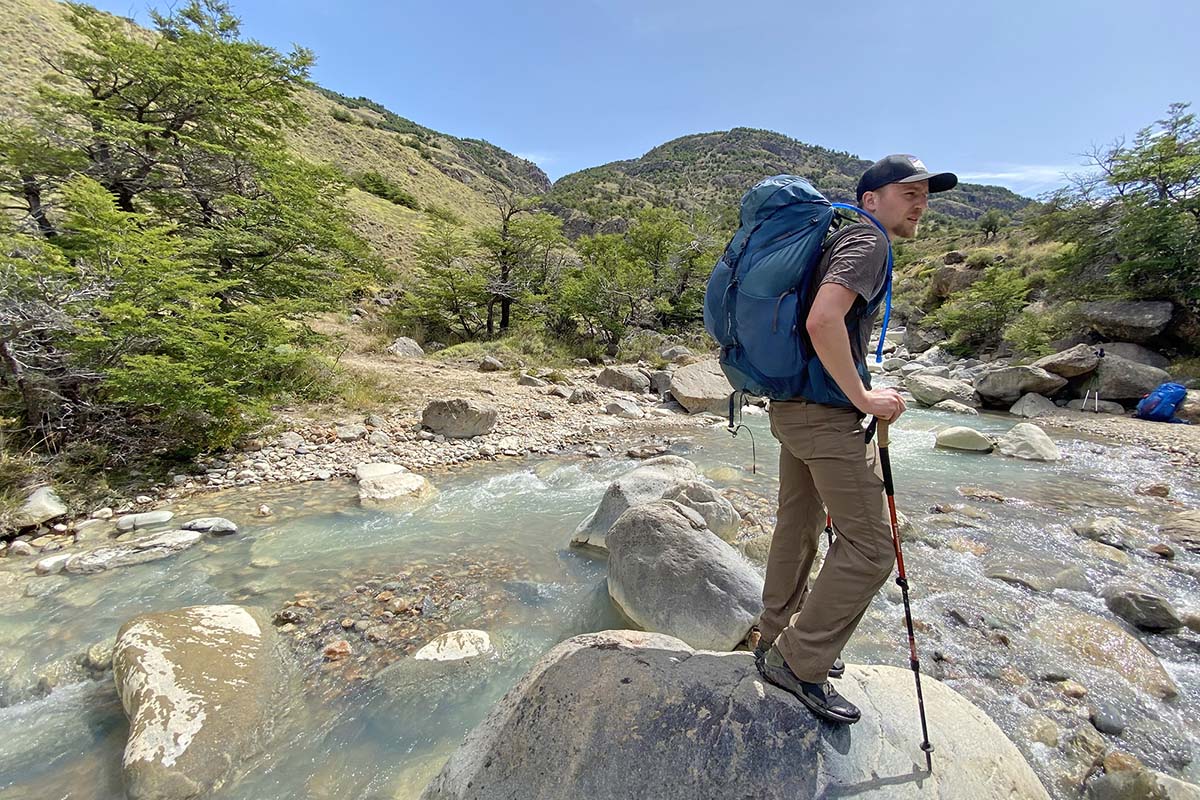
Last but not least, an interesting budget option to the Paragon is REI Co-op’s $199 Flash 55. This pack clocks in almost a pound lighter at 2 pounds 10 ounces and maxes out at 30 pounds, putting it squarely in the fast-and-light category (although we carried 35 pounds on a trip into the Grand Canyon and it did just fine). Feature-wise, the two packs have their organizational strengths: the Flash can be stripped of its top lid and other accessories to shave significant weight, but the Gregory comes with a rain cover and the option to adjust the torso and hipbelt. Plus, the Paragon is tougher with its panels of 210D nylon (the Flash has 100D in all places except the 420D bottom). In truth, both are solid options for the majority of overnight and weekend backpackers, and a final decision should come down to features, durability, and how much you plan to carry.